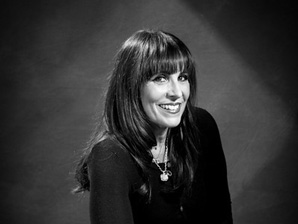Before You Seat Us at the Table, Prepare to Feed Us
 Reading Time: 2 minutes
Reading Time: 2 minutesThis has been the summer of diversity and inclusion.
Suddenly, tech and finance companies with all-male management teams and boards are updating their ad campaigns to look like 1984 Benetton ads. And they post on LinkedIn about how inclusive their cultures are.
Oh, look! I see women, people of color, obvious LGBT people, and a person with a prosthetic. And maybe (but probably not) someone with grey hair.
Sometimes companies overcompensate. Wow! You found seven women for a panel! I’m impressed.
That’s wonderful. It’s a start.
But where were all those faces a few months ago? I’m not saying that I don’t applaud the effort. But the ad campaigns and the public statements are just the very tip of a very complex iceberg.
Sadly, only about half of companies have policies in place to foster diversity, inclusion, and equity.
Adjusting your optics and filling open positions with diverse types of people is a great step, but everyday behaviors and language are the most important ingredient of the secret sauce of inclusion. “D” is meaningless without the “I.”
As a woman who worked in banking in the 1980s, I was invited into the meetings. But, when the golf games, sports chatter, and jokes about “the ball and chain at home” occurred, I was the odd (wo)man out. Another company I worked for scheduled a strategic planning meeting on Yom Kippur, the most important holiday of my faith. (If that happened today as opposed to almost 20 years ago, I would have spoken up. Instead, I just attended and listened to my stomach growl all day while I fasted. I didn’t want to call attention to the fact that I was a minority, but now I know that both employees and employers have an obligation to say something when they see something — without fear of retribution.)
We are certainly more conscious these days, but diversity AND inclusion are a package deal. If you’re going to bring people of different ages, races, colors, and beliefs into your organization, make sure they feel 100 percent welcome into the team and the culture.
The reality is that many people are never totally comfortable dealing with someone who is different from the people they know and trust. They may not admit it, but it’s true. Companies need to self-reflect and work hard to overcome their internal biases, “clubby” feel, and day-to-day habits to make sure EVERY person feels like they belong.
I was recently speaking to a coach who is being brought into companies to help them change their internal cultures and look at their language, their behaviors, and their company advancement policies.
Perhaps it’ll take those third-party “chefs” to make sure the companies that are just starting to hire new types of people are ready with the satisfying recipes for success that EVERYONE wants to eat.
P.S. Before I hit “publish,” I sent this post to two recruiter friends of mine to make sure it wasn’t too ballsy and bitter. Not only did I get the green light, but LT Ladino Bryson (“The Employment Therapist”) sent me her own diversity blog post which, ironically, has a food metaphor. Great minds think alike AND we’re all hungry for change!

